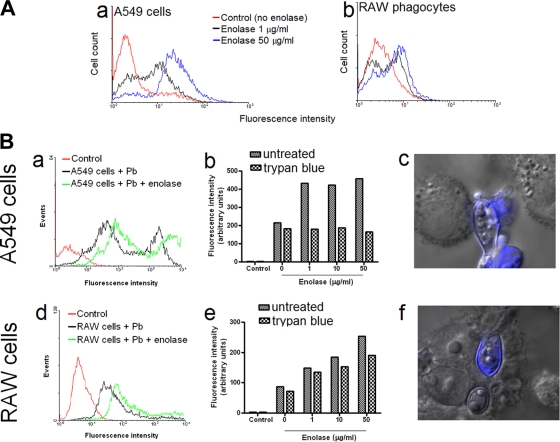FIG. 5.
Exposure of host cells to rPbEno enhances the efficacy of association of P. brasiliensis to host cells. (A) Treatment of A549 epithelial cells (panel a) or RAW phagocytes (panel b) resulted in increased reactivity with WGA, indicating enhanced exposure of GlcNAc residues. (B) Effects of rPbEno on the infection of host cells by P. brasiliensis. Panels a and d demonstrate that P. brasiliensis (Pb) efficiently infects epithelial (A549) and macrophage-like (RAW) cells. Histograms of control cells (noninfected) are shown in red. Exposure of host cells to rPbEno (10 μg/ml, green histogram) results in their increased association with fungi, as determined by the comparison with infection systems prepared in the absence of enolase (black histograms). Exposure of cells infected with FITC-P. brasiliensis to trypan blue (b and e) resulted in an accentuated reduction of fluorescence levels in A549 cells but not macrophages. The suggestive internalization of P. brasiliensis by macrophages, but not by epithelial cells, was supported by fluorescence microscopy (c and f). In this analysis, yeast fluorescence appears in blue.

